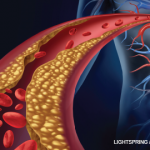 A new study questions whether acetaminophen is a risk-free pain reliever for patients aged 65 and older, including those with osteoarthritis (OA).
A new study questions whether acetaminophen is a risk-free pain reliever for patients aged 65 and older, including those with osteoarthritis (OA).
Although acetaminophen is often touted as an alternative to non-steroidal anti-inflammatory drugs (NSAIDs), such as ibuprofen, a population-based cohort study found it carried an increased risk of peptic ulcers, bleeding and other side effects.
The study was published in November in Arthritis Care & Research and led by researchers from the University of Nottingham, United Kingdom.1
“These findings support reconsideration of acetaminophen as the first-line oral analgesic by guideline development groups [that] currently recommend its repeated use for long-term conditions, such as osteoarthritis,” the study researchers wrote.
Background
The researchers acknowledge that many clinical guidelines advocate acetaminophen as a first-line oral treatment for OA pain because of its perceived safety compared with other oral analgesics.
However, “acetaminophen can cause COX-dependent side effects analogous to those of [NSAIDs],” according to the authors.2-4 The U.K.’s National Institute for Health and Care Excellence (NICE) addressed this safety concern in its 2014 updated guidance on OA management and chose not to recommend acetaminophen as a regular treatment in its 2022 update.5
Although randomized controlled trials (RCTs) can provide evidence of drug efficacy and safety, they come with ethical concerns and cost implications when it comes to the use of acetaminophen, the researchers noted. For this reason, most safety evidence regarding acetaminophen comes from post-marketing observational studies. These are accompanied by channeling bias and other such challenges.
“This bias occurs when individuals, particularly older adults at higher risk of gastrointestinal and cardiovascular adverse events, are less likely to be given NSAIDs but are more likely to receive acetaminophen,” the study’s authors wrote.
To minimize this bias, the study researchers compared like-to-like, such as selecting people aged 65 or older, comparing acetaminophen users vs. non-users in the general population and in a subgroup of people with OA using the U.K. Clinical Practice Research Datalink (CPRD). They simulated an RCT in the CPRD by matching two groups for all potential confounding factors, such as age, sex, comorbidity and other risk factors, identified in the database. The CRPD is a large healthcare database in the U.K. that compiles routinely collected anonymized patient data from 736 general practices, covering 17 million U.K. residents. It’s one of the largest electronic health records used to evaluate the effectiveness of prescribed medications.
